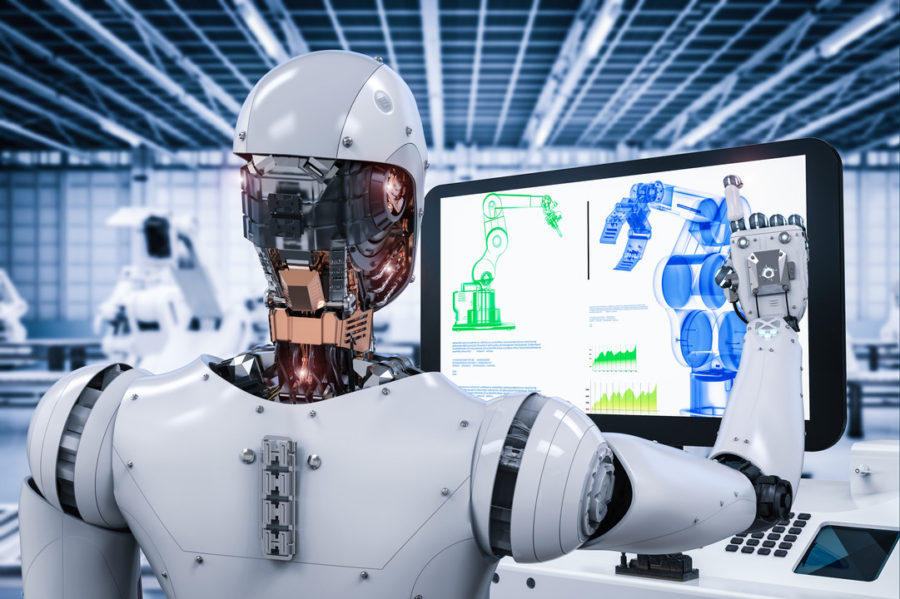How robo-advisors wiped out those killer robots
The small robot desperately wanted to grow. Everyone in his family was small like him, yet he wanted to reach higher heights. Every morning his friends would lift him up, so his legs could stretch.
It proved so effective that he was three times the size of any robot found across the land. Everybody was so impressed that they copied him. And so, the ‘rise of the machines’ had begun without the human race being annihilated.
Most stories about robots taking over are more fatalistic and depressing. It’s more profitable. The Terminator movie franchise made a fortune exploiting our fears on this outcome. But perhaps it might not be so bad when it finally comes.

It’s true that a point of singularity between human and machine intelligence will be crossed in the near future. We may become an inferior life form on this planet as artificial intelligence takes over. But perhaps we will become so unimportant and insignificant that machines just leave us alone.
It is too soon to say what the outcome will be. But one thing we should accept is that artificial intelligence and robotic automation is already here. It’s a fast growing part of our economy. And, a lot is already being invested despite our fears of being replaced.

Of course, there will be a lot of change. Jobs will be lost and new jobs will be created. It will disrupt many industries, including the one I work in – investment management. However, here I believe automation could actually be a force for good.
Right now, 58 per cent of Americans hold most their investable assets in cash according to the BlackRock Investor Pulse Survey 2017. In the UK, it’s higher at 81 per cent according to another survey carried out by Atomik Research.
Holding the bulk of your wealth in unproductive cash over the long term isn’t a good idea. Inflation will erode its value, which might be minor at first, but over time can compound significantly.
Consider Barclays’ Equity Gilt Study: if you had invested £100 in the UK stock market in 1945 it would have been worth £181,676 by 2016 with dividends reinvested. In comparison cash would have delivered £6,289. Both had to fight against inflation, but there was one clear winner.
This is where technology can help. Greater automation within the investment management industry could lower account minimums, lower costs and make investing much more accessible.

If implemented properly, it could provide the infrastructure needed to facilitate a mass market of investors that have less than $200,000. These are investors that wouldn’t normally pay for investment advice, because they find it too expensive relative to the size of their portfolios.
A step further would introduce the robo-advisor, which would make it even more efficient to help this underserved segment of the market.
A robo-advisor collects information about an investor often through a web portal. It runs through a series of questions about the investor’s goals, time horizon and tolerance to different risks. It then offers advice or will automatically invest and rebalance the investor’s portfolio.
This technology has actually existed for a while. I worked for a firm 15 years ago that used a system that allowed me to restructure and rebalance a portfolio very quickly under its free advice model. It used the information provided by the client, plus the buy and sell security recommendations made by the research team. It would automatically write a recommendation letter, which I would tweak and then hand to the advisor to read and sign.
They eventually rolled out these tools directly to their investors. But they held back initially because they were worried whether investors would trust the technology.

Trust is important for the investment management industry. There has been an ongoing active-passive debate that has split the investment community. It has raised fundamental issues on what the role investment management firms should take.
Either they should use their skill to outperform the market or take on a more modest and less expensive role in tracking an index. Regardless of what position is taken, automation and robotic advice could bring about greater harmony between these two camps. Passive solutions could be seamlessly integrated besides active strategies that actually outperform. What the investor would get is a much more flexible and nimble portfolio in terms of allocation. It would be cheaper to manage, but still offer exposure to active talent.
Perhaps the rise of robo-advisors might put some elements of the investment management industry out of business. However, it could also create new areas and provide a better and more reliable service for investors.
So it seems there are more important things to look forward too than being wiped out by killer robots. Instead, the future should give us cheap good-quality investment advice.











